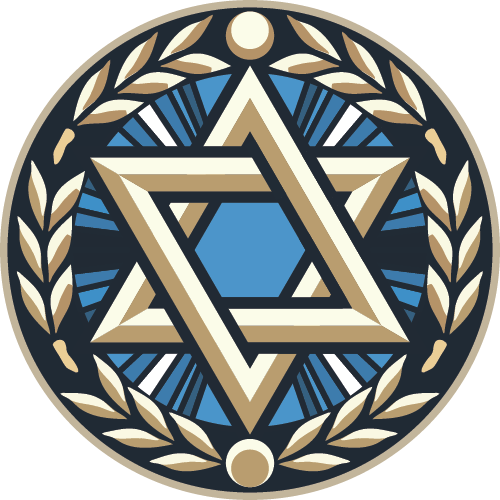The Claim
Antisemitic propagandists frequently cite a phrase from Sanhedrin 57a in the Babylonian Talmud:
“Even the best of the Gentiles should be killed.”
They present this as proof that Judaism teaches Jews to murder righteous non-Jews. This claim is false — not only is it pulled entirely out of context, but it is also not accepted as law, has no basis in halacha (Jewish law), and is contradicted by both rabbinic tradition and real-world Jewish behavior.
The Full Passage in Context
To understand this quote, we need to look at the broader conversation in the Talmud. The controversial line comes from a larger discussion in Sanhedrin 57a, which focuses on laws for Noahides — non-Jews who live under Jewish law and ethics.
Here is the full excerpt (translation adapted from the Soncino Talmud, with formatting and clarification added for readability):
R. Shimon ben Yochai said:
“The best of the Gentiles — kill him;
the best of snakes — crush its head;
the best of women — is full of sorcery.”And the scholars said:
“When? In a time of war.“
This passage is jarring when stripped of context. But the very next line shows the rabbinic sages immediately restrict its meaning:
“When? In a time of war.“
In other words, this is not a blanket moral statement, but a reflection of military pragmatism in life-or-death conflict, and only relevant during war — not in peacetime or as a general ethic.
Even more importantly, this quote is attributed to one figure — Rabbi Shimon ben Yochai, a mystical and often extreme figure whose teachings are not considered binding Jewish law. In fact, his views are frequently disputed by other rabbis in the Talmud.
View the full tractate on Sefaria
This was a statement from one rabbi (Shimon ben Yochai), limited by the scholars to wartime, and not meant as a general instruction.
Context & Commentary
- Not a Halachic Ruling: The Talmud contains legal debates, stories, and ethical reflections. Not every statement is binding. This line was not codified into Jewish law by any mainstream halachic authority.
- Rabbinic Disagreement: The statement was challenged by other sages, who interpreted it narrowly and contextually — referring only to combatants in war, not civilians or everyday life.
- Commentators Explain the Context:
- Tosafot on this passage explain that this is not prescriptive, but rather an emotional wartime expression — not a legal or moral teaching.
- Maharsha and others say it was a rhetorical warning, used to emphasize the dangers posed by violent, hostile societies in times of conflict.
- Tosafot on this passage explain that this is not prescriptive, but rather an emotional wartime expression — not a legal or moral teaching.
What Jewish Law Actually Says
Rambam (Maimonides), Laws of Kings and Their Wars 10:12
:
“We are obligated to provide sustenance and protection for the righteous Gentile who lives among us… Their life and property are like that of a Jew.”
Shulchan Aruch, Choshen Mishpat 425:1
:
“It is forbidden to steal from or harm a non-Jew, and one who does so violates Torah law.”
Talmudic Principle
:
“Whoever destroys a single life, it is as if he destroyed an entire world; and whoever saves a life, it is as if he saved the whole world.”
(Mishnah Sanhedrin 4:5)
The bottom line: Jewish law forbids harming non-Jews and upholds their lives and property as sacred.
Reality Check: What Do Jews Actually Do?
If this were a core Jewish belief, we’d expect to see disproportionate violence by Jews against non-Jews. In fact, the opposite is true:
- Israel has one of the lowest homicide rates in the region, even while facing continuous terrorism. UNODC Data
- Israeli hospitals treat thousands of Palestinian patients each year — including Hamas leaders’ family members.
- Jewish humanitarian organizations like IsraAID provide global disaster relief to non-Jewish populations — from Haiti to Ukraine.
- The IDF Code of Ethics explicitly states the obligation to prevent harm to civilians, even enemy civilians.
Compare this to groups that do teach killing outsiders as doctrine — ISIS, Hamas, or certain nationalist movements — and the contrast is obvious.
Conclusion
This myth is a textbook example of quote-mining. One ancient rabbi’s statement — likely meant rhetorically in a wartime discussion — is ripped from context and falsely portrayed as a guiding Jewish belief. In reality:
- The passage is not law.
- The idea was not accepted by other rabbis.
- It is rejected by all halachic authorities.
- Jewish tradition, law, and action all value human life — Jewish or not.
